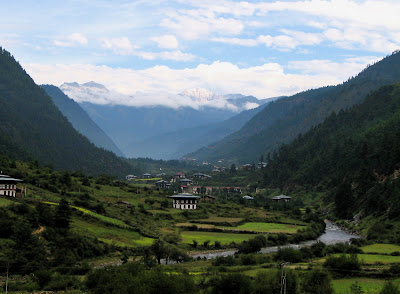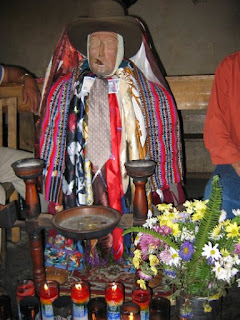There seems to be different ideas within our island as to what is, inherently, being a Puerto Rican. This is due to the fact of the many influences our culture has received and is currently receiving. Spanish, African, Indian, and (most recently) American cultures have shaped the image of what the typical Puerto Rican is. We cannot deny, however, that the Caribbean has had a great influence on our identity also. So to me being a Puerto Rican is very similar to a traditional Puerto Rican dish: "Arroz con Pollo (Rice with chicken)." Aside from being a dish with a great array of complex flavors and textures, it is also a saying in Puerto Rico which suggests that something is very complex and confusing.

One thing that most Puerto Ricans would agree is that we love to party. There is always an excuse to celebrate something in our island. Our Christmases extend way beyond what a typical Christmas should because we celebrate: Thanksgiving, Christmas, New Years celebration, Three Kings Day, " Fiestas de la Calle San Sebastian", "Octavitas and Octavonas". Right about mid-January we finish our festivities. Family gatherings during these periods have a list of some large requirements: Typical Food, Music (salsa "de la gorda", merengue), dominoes, and alcohol. Alcohol is very central of the Puerto Rican culture. our favorite drink is "Ron Caña" which would be more or less the equivalent to moonshine in the US, however, ours is made with fruit and it is left to cure for at least six months (this develops the flavor and overall texture)

The "Fiestas de la Calle San Sebastian" is a traditional festival in which the Puerto Rican culture is exposed and taken to its maximum expression. There are various cultural activities, artisan sculptures and art works, plena, bomba and reggaeton (nighttime mostly). The Old San Juan transforms into a cultural mecca during the weekend. You may find a Puerto Rican from every town this island has. We love them so much that we even make reservations in local hotels in anticipation to next year's festivities. In the picture below you can appreciate the typical " Cabezudos". These exaggerated masks depict different cultural personas from our island. They are seen walking up and down in the streets of Old San Juan; dancing.

Politics is a very big issue in Puerto Rico. There are three primordial parties: PNP, PPD, PIP; these parties have been around for most of our political history. Most recently new parties have formed because of the political bipartidism that occurs in every election for governor. The political rallies look like a music concert or a very large festival. It is sad to see many fanatical voters in this island, but, like it or not, they are a part of our culture and we must accept them. In order to progress as a nation we must assume the full responsibility of voting because it is a serious matter.
Puerto Rico is a potpourri of different cultures mixed with our own. This is the main reason people tend to fall in love with our island and our culture. We have something to offer to everyone. I have to say this has been one of my favorite posts. Aside from the fact that my blog is called Puerto Rican Winds, this post has served as a way to reflect upon what is means to be Puerto Rican.
I'll just leave below a picture of my favorite dish that I'm sure will leave most wanting to try it.




 As I dove into this writing experience I learned about the great impact it had on my writing. The first few entries were hard because of the anti-rules. I'm accustomed to write coherently while being on the lookout for any possible errors I could commit, however, these new set of rules changed the game. I could now focus solely on the ideas and nothing more. I caught myself dashing out or fixing some of the words I miswrote. Even stopping to think because of the sudden "writer's block". Still I learned and pretty much dominated these rules. This style of writing has helped me in other classes to get my ideas flowing in order to write killer essays. Forty Journal entries and twelve Life Compasses were made.
As I dove into this writing experience I learned about the great impact it had on my writing. The first few entries were hard because of the anti-rules. I'm accustomed to write coherently while being on the lookout for any possible errors I could commit, however, these new set of rules changed the game. I could now focus solely on the ideas and nothing more. I caught myself dashing out or fixing some of the words I miswrote. Even stopping to think because of the sudden "writer's block". Still I learned and pretty much dominated these rules. This style of writing has helped me in other classes to get my ideas flowing in order to write killer essays. Forty Journal entries and twelve Life Compasses were made.












